BLOG ARTICLE
How To Do a Solo Podcast: Actionable Tips and Tools You Need
Last updated: 7/6/2025
Last updated: 7/6/2025
Do you want to start podcasting alone without worrying about finding guests and co-hosts to run your show?
We've got you covered.
In this guide, we will walk you through every stage of solo podcasting from finding podcast ideas to publishing your first episode - plus essential tools to streamline your solo podcast workflow to give you an edge in the online podcast landscape.
Let's get started.
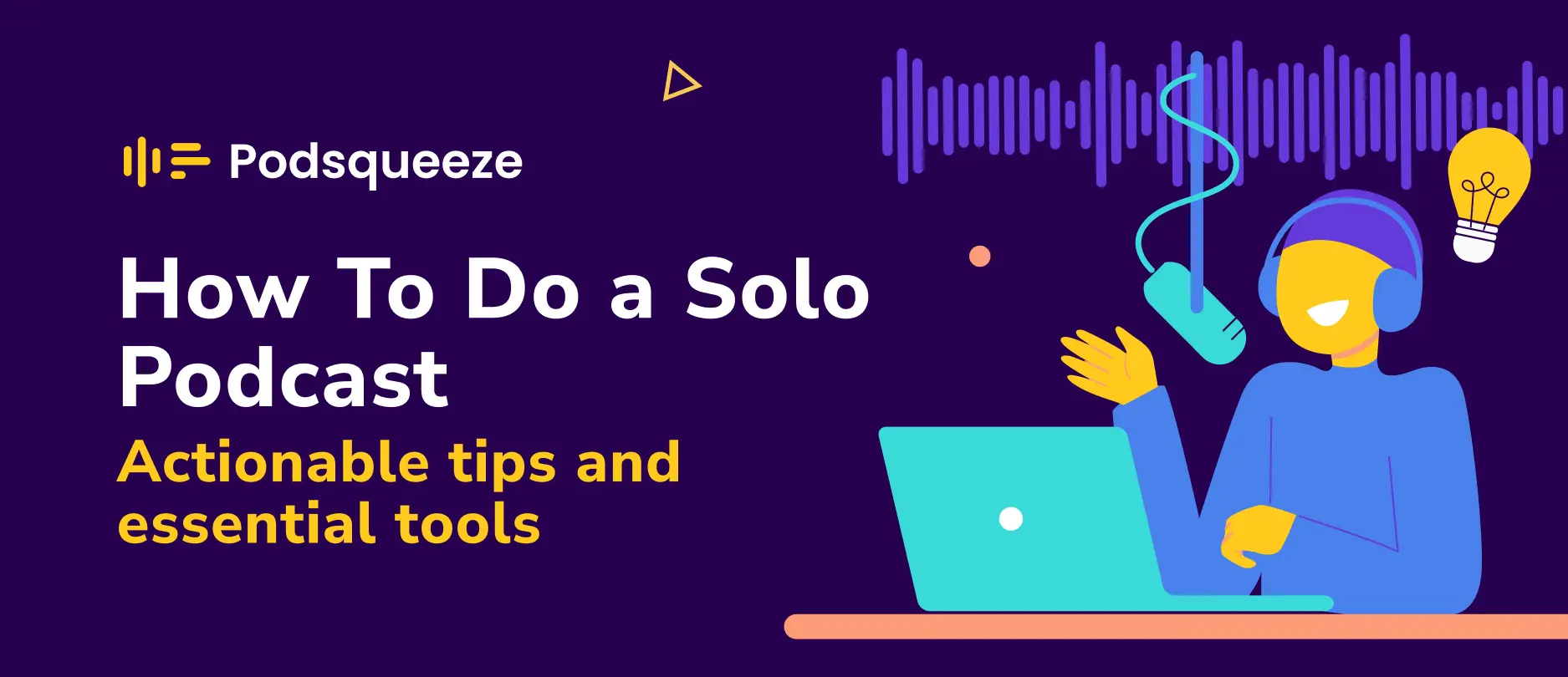
How do solo podcasts work?
A solo podcast is like a one-man show. It's more than just being the only host but also, you'll be the one in charge of planning and scripting, recording and publishing, and promoting and fine-tuning your show. You're solely the one behind everything.
Why solo podcasting?
Some podcasters deliberately started as solo podcasters while some stumbled on it by mistake. For example, Rob Walling, one of our users and professional podcaster, unexpectedly transitioned to solo podcasting when his co-host left. Surprisingly, this shift proved to be a hit as he found his audience was especially interested in his direct insights.
Solo podcasting offers a unique set of advantages that cater to both podcasters and their audiences. It provides a personal touch, allowing the host to connect with listeners on a more intimate level.
However, venturing into solo podcasting is not without its challenges. The solo podcaster bears the entire weight of content creation, from brainstorming topics to delivering engaging monologues, and the pressure to consistently entertain and inform can be daunting.
So is solo podcasting the right format for you? Let's find out!
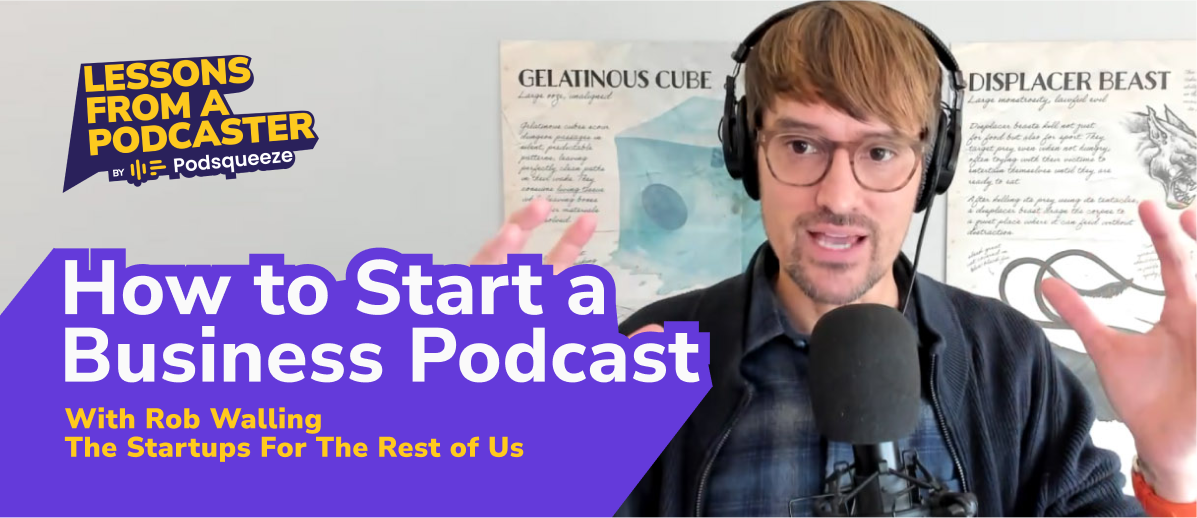
What do you want in your podcast workflow?
Control: If the total control of your time is what you want without compromising anything as a podcaster, then solo podcasts might be what you need.
Flexibility: If you prioritize ease and fewer protocols in the workflow of creating your podcast, solo podcasting can be ideal for you.
Connection: If you want to have a uniquely intimate connection with your audiences unlike talking to a co-host, a solo podcast can help you create a better connection with your audiences.
What do you not want in your podcast workflow?
As good as the perks of solo podcasting are, it's important to mention the limitations that come along with podcasting yourself.
Challenging: Solo podcasts can be challenging adventures because you're the backbone of the show and everything falls on your shoulders. You've to manage and execute yourself which can be challenging for some people.
Lonely: The truth is, solo podcasting can be a lonely adventure because unlike having a co-host, you're talking to a microphone without having anyone on the other end to give instant feedback.
Draining: Solo podcasting can be laborious and energy-consuming. Depending on your podcast schedule, allocating a sizable amount of time to doing everything yourself can be quite a deal breaker for some podcasters.
Keep in mind that crafting a successful podcast involves a range of tasks, including content planning, researching topics, analyzing the competition, scriptwriting (when applicable), recording and editing audio, podcast transcription, writing show notes, repurposing episodes for social media, and promoting your show.
Before diving into solo podcasting, remember that having a co-host can significantly ease the workload and make the entire podcasting journey more enjoyable. Sharing duties not only divides the workload but also helps maintain motivation levels, making it a smart strategy for those looking to create a sustainable podcast and publish consistently.
How to do a solo podcast
Having understood the pros and cons of solo podcasts, the next step now is how to start podcasting yourself. And there are 4 steps to this;
Step 1: Start with an idea (balance passion and market demand)
The core of your podcast lies in its central idea and what you aim to achieve with it. Whether you envision your podcast as a digital diary shared on various platforms or as a professional endeavor, it all starts with a concept that excites you.
To find your podcast idea, here are some questions that can steer you in the right direction
- What topics or subjects am I passionate about?
- What expertise or knowledge do I have that I can share with others?
- Can I sustain interest in this topic over the long term?
- What format or style of podcasting best suits my personality and content?
These questions can help guide you toward a podcast idea that aligns with your interests and can sustain your enthusiasm over time.
However, it's important to strike a balance between your passions and market demand to maximize your podcast's chances of success. After all, podcasting about what you love is less rewarding if there's no audience interested in listening.
A simple method to gauge if there's an audience for your podcast topics is through keyword research.
You can use our free podcast topic research tool, to find topic ideas tailored to your niche and also analyze their performance on Google and YouTube, helping you prioritize which topics to focus on next.
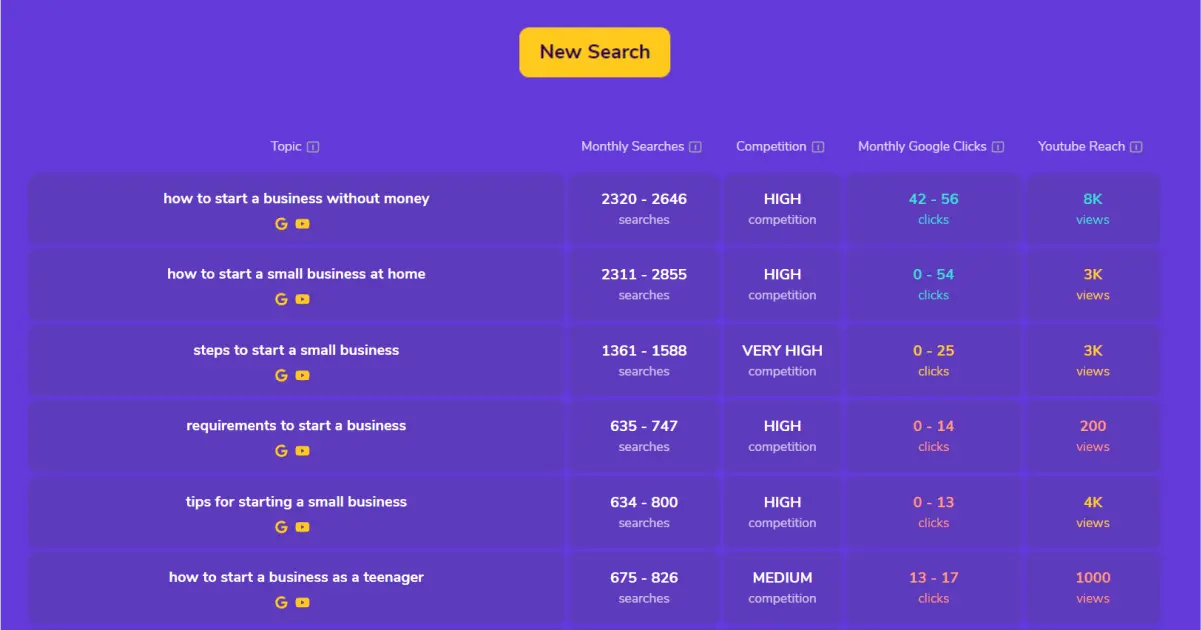
Conducting a competitive analysis is another strategic move. Explore popular podcasts within your niche and note their most successful episodes. This can provide insights into trending topics, audience preferences, and potential gaps in content that you could fill.
By understanding what resonates with listeners in your area of interest, you can better tailor your podcast to meet audience demands while standing out from the competition.
Step 2: Find a publishing schedule that works for you
One of the perks of solo podcasting is the flexibility to do what you want whenever you want it. To get the best out of podcasting yourself and getting results over a long time, you need to set and control the pace at which you produce episodes.
There's no fixed rule on what your schedule should be as it totally depends on you. For some, one episode a week might be ideal while some could do 2 episodes a week without any hassle.
The goal here is to find a pace that works for you and stick with it. This will not only help you maintain consistency but also better your workflow, improve your planning, and set audience expectations on when to look forward to your episode.
Step 3: Start recording
The next (and obviously) most important step towards starting a solo podcast is getting your mic and recording your voice. This embodies your thoughts shared on a mic and the core message you're passing across to your audiences.
This stage is often overstated because many podcasters think they need the best mic to get started. This statement couldn't be more inaccurate. In reality, there are several free and budget-friendly options available that can deliver semi-professional sound quality.
- Free option: Many top-tier smartphones are perfectly capable of recording your voice with impressive clarity. The key is to find a quiet, suitable environment for your recordings to minimize background noise. When you combine this with a sound enhancement tool, the quality of your audio can be surprisingly good, rivaling more professional setups.
- Under $100: The next step up in simplicity and affordability is to opt for a USB microphone that plugs directly into your computer. A popular and cost-effective choice is the Audio Technica ATR2100X USB, priced at about $60. This affordable microphone, favored by professional podcasters like Rob Walling, offers high quality sound without a hefty investment.
- Under $200: For a more comprehensive setup, consider pairing an audio interface with a dynamic microphone. A dedicated audio interface not only gives you finer control over your audio levels but also allows you to connect additional microphones, making it ideal for interviews. Generally, an audio interface outperforms a laptop's built-in audio system in processing and converting microphone signals into digital audio, resulting in superior sound quality. If you are on a budget, Behringer offers quality interfaces, such as the U-Phoria UMC202HD, capable of delivering professional results. You can pair this interface with an Audio-Technica AT2020 XLR microphone, which is a highly popular, budget-friendly option for podcasters who want to take their sound quality to the next level.
Step 4: Fine-tune, polish, and publish your episode
Editing is the final stage of producing your solo podcast, and the goal is to make it as seamless and minimal as possible.
Some podcasters invest heavily in their edits using free tools like Audacity or more advanced software like Hindenburg Pro.
However, podcast production can also be minimal, requiring very little to almost no editing. For example, in our podcast "Lessons from a Podcaster", our recordings are very much the final product.
Imagine yourself chatting with a friend; that’s the natural flow you want to capture. Don’t stress over minor slip-ups or natural pauses, as they add a touch of authenticity that listeners often appreciate. Instead, focus on trimming out any major disruptions or obvious errors, like equipment malfunctions or unexpected interruptions, just enough to polish your episode without overdoing it.
If you want to clean your recordings further, you can still do it easily with the help of AI tools. For instance, Podsqueeze AI audio enhancer can improve the audio quality of your recording, making it sound studio-like, and remove long silences and filler words with a single click. Furthermore, free websites like Sound Buttons Lab allow you to add intros, outros, and sound effects live during your recordings and streams, eliminating the need to add them in post-production.
By recording with care, having a clear plan, and utilizing these tools, you can keep the editing process straightforward and maintain the genuine feel of your podcast.
3 of the best solo podcasts to get ideas from
1. Rob Walling podcast
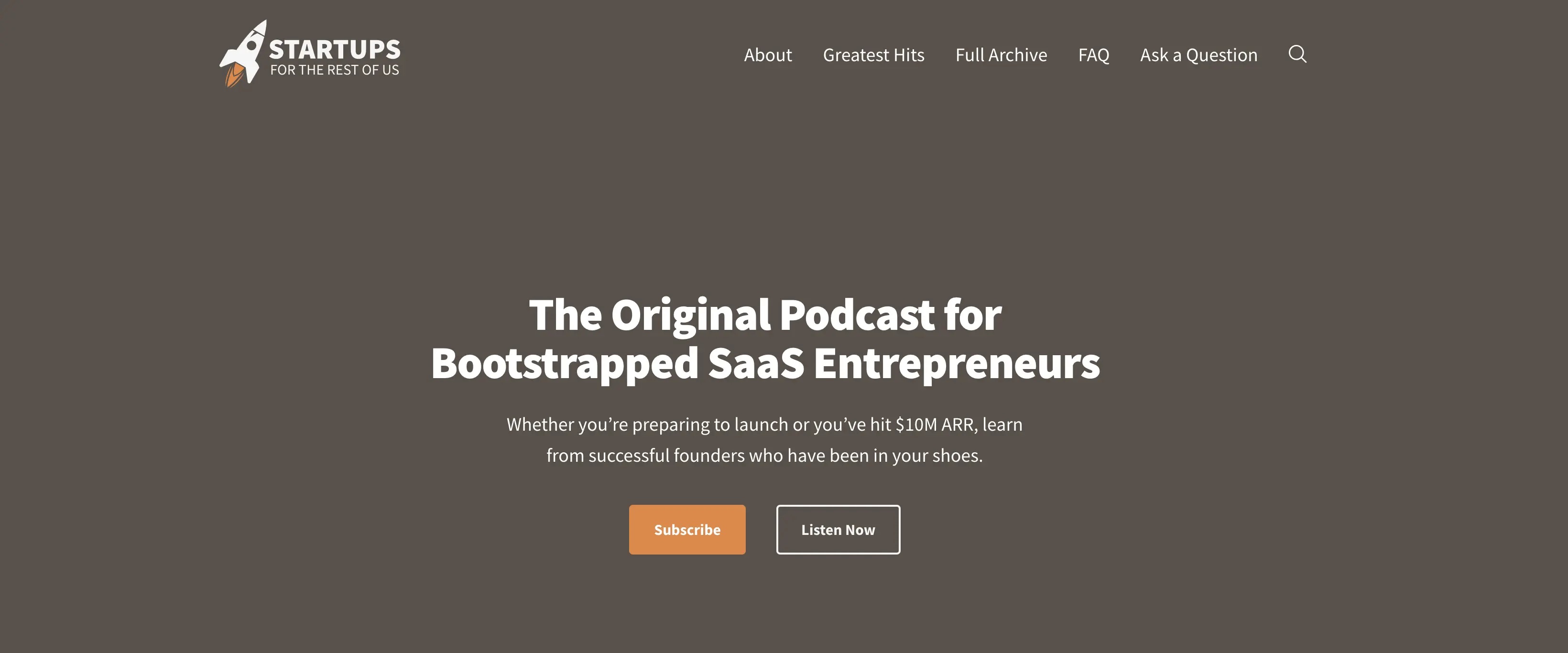
Rob Walling’s "Startups For the Rest of Us" is a podcast for bootstrapped founders and indie hackers looking to build and grow their businesses without relying on venture capital.
- Ideas to discover: You can learn how sharing personal anecdotes and experiences, stories, tactical advice, and deep dives could make you more relatable.
2. Seth Godin podcast
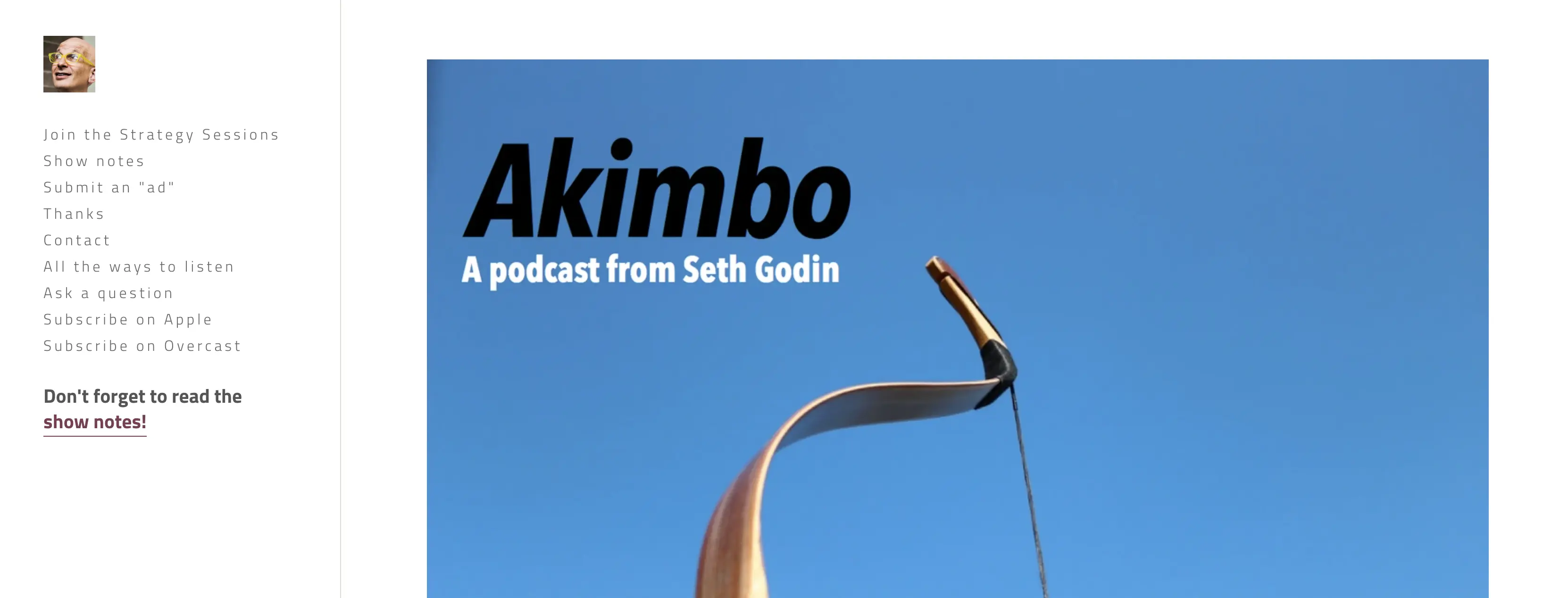
"Akimbo" is a podcast by Seth Godin, focusing on culture, leadership, and the way ideas spread. Seth, a renowned marketing expert and author, explores how we can challenge the status quo, think differently, and make an impact in business, creativity, and society.
- Ideas to discover: The podcast is known for its thought-provoking storytelling, drawing from history, psychology, and marketing to help listeners see the world from a fresh perspective.
3. Rob Dail podcast
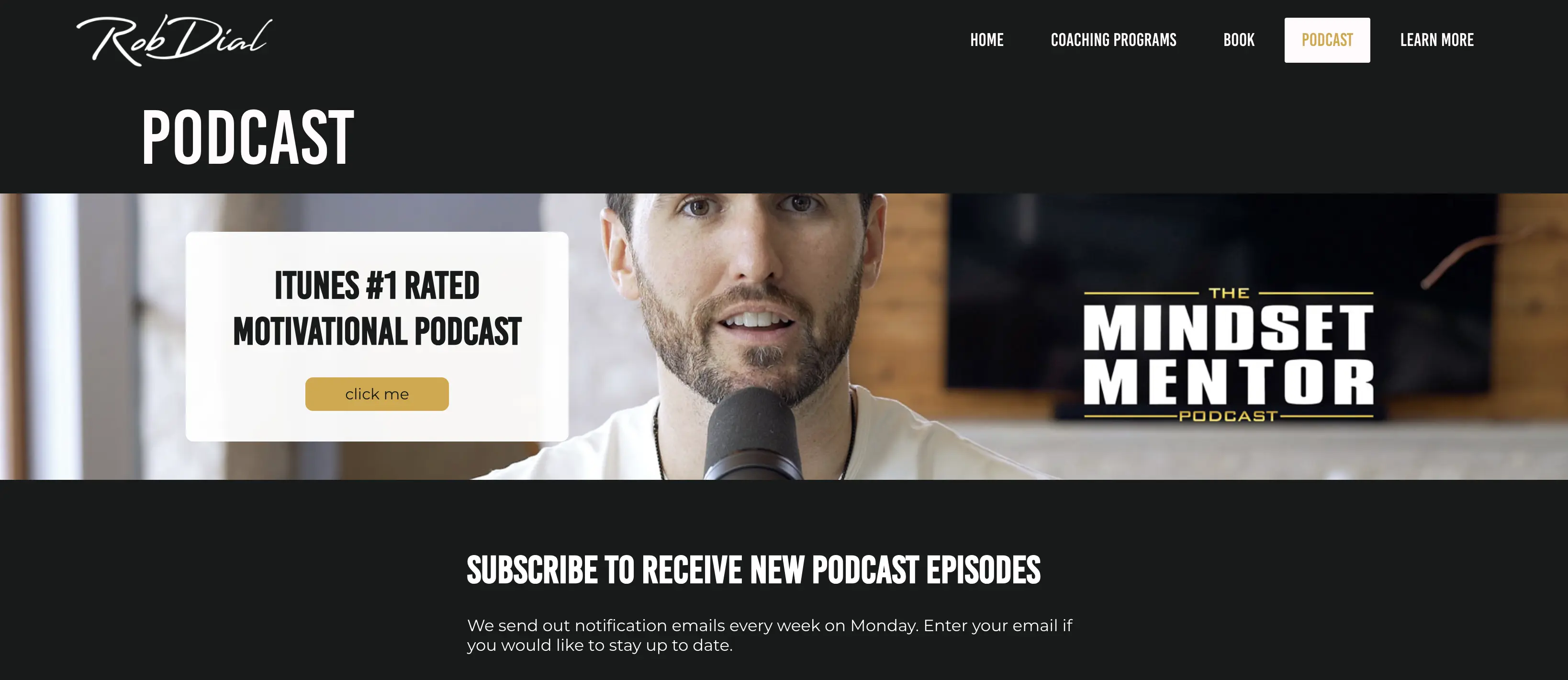
"The Mindset Mentor" is a podcast by Rob Dial, focused on personal development, success mindset, and motivation. It’s designed to help listeners improve their mindset, overcome mental barriers, and achieve their goals.
- Ideas to discover: Rob covers topics like self-discipline, productivity, confidence, and emotional resilience, often delivering short, high-energy solo episodes with practical takeaways - making him more personal with his listeners.
5 tools for solo podcasting
Like every other matured industry, the podcasting landscape has seen massive growth in your listeners.in AI for streamlining podcast creation. With these tools in hand, podcasting yourself has never been easier.
Here are some essential AI tools to help you streamline your solo podcasting;
-
Audacity
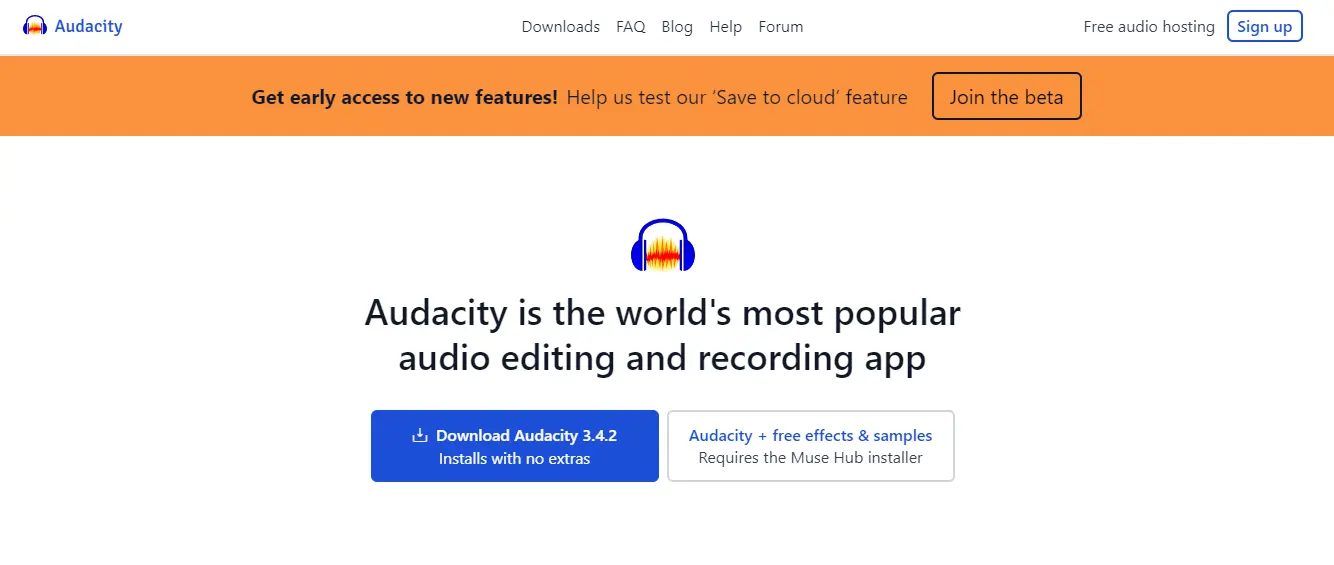
Audacity is a free-to-use, audio recording and editing software with a user-friendly interface and powerful features for recording, editing, and mixing audio files. It's an ideal tool for solo podcasters who want a simple interface tool without too much learning curve.
- Buy a mic or use your phone: This is as straightforward as it sounds. You can buy a quality microphone to get started or simply use your iPhone mic for recording.
-
Adobe voice enhancer
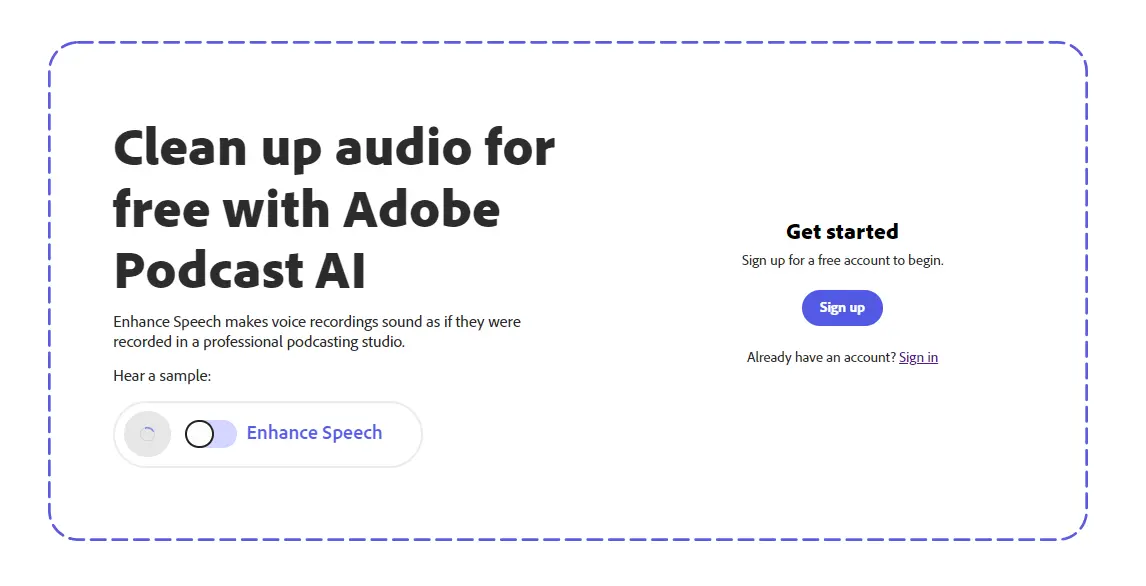
This is an AI-powered tool by Adobe for enhancing audio and removing any hiccups during a recording session. There's a paid version that can take care of all voice-tuning but as a solo podcaster, it can power all your voice-tuning needs.
-
Auphonic
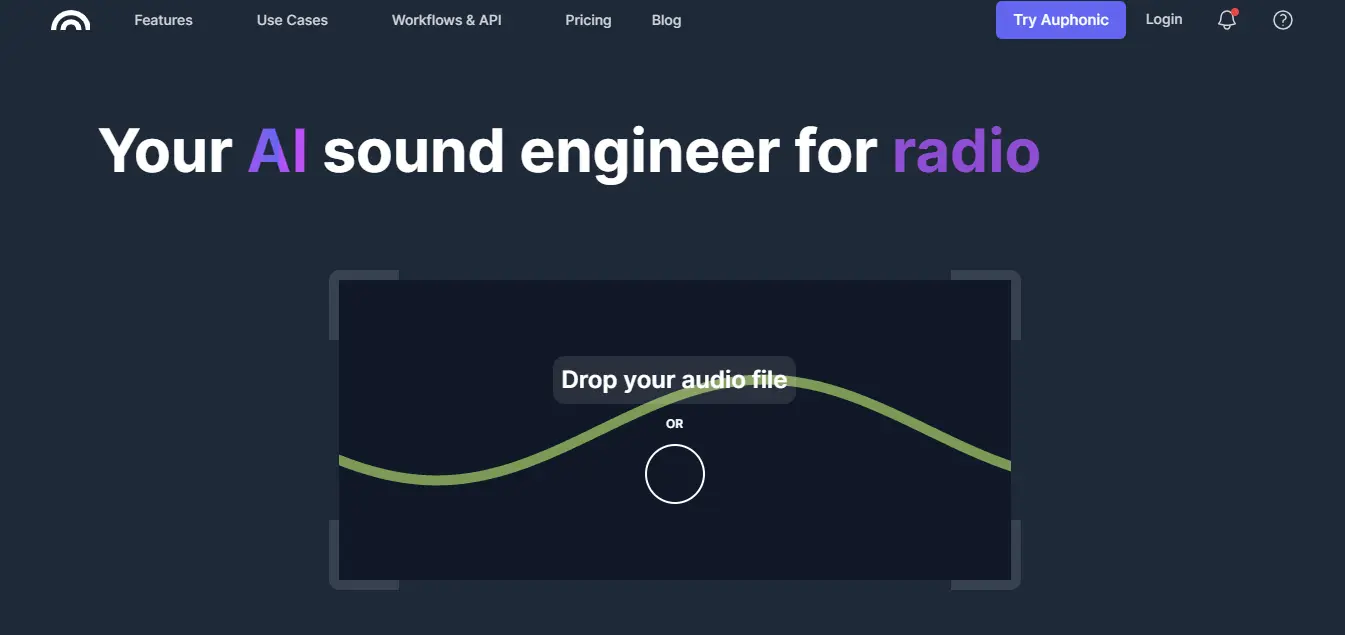
Auphonic is an AI-powered sound engineer for your podcast recording. You can trust this tool to achieve professional-quality audio in a matter of minutes.
-
Podsqueeze

This is a podcast AI copilot for powering your podcast content creation. Think of it like a podcast virtual assistant for generating transcriptions, show notes, subtitles, podcast landing pages, blog posts, chapters & timestamps, and even for generating animated waveforms for promoting your solo recordings as videos on social media like Tiktok, Facebook, YouTube, Instagram, etc.
-
Disctopia

Disctopia is a creative suite that features what a creator needs to succeed as a team or running your one-man show. It is as simple as this; you upload your content, measure engagement, and earn profits - while also connecting you with a vibrant community of creators and fans.
Additional reading: How to Start a Small Business Podcast.
Wrapping up
And that's all you need to get started on solo podcasting. We've covered a four-step approach to podcasting yourself - selecting an idea, having a schedule, recording your audio, fine-tuning, polishing, and publishing your audio. Additionally, as a solo podcaster, there's only so much you can do which is why we're handpicked essential tools to streamline your work.
It's about time to get out there and publish your amazing message.
FAQs about doing solo podcasts
-
What's the ideal length for a solo podcast episode?
There's no ideal length of a solo podcast should be. The ideal length can vary depending on your content and audience preferences. Generally, we will advise that you aim for a length that allows you to cover your topic thoroughly without losing your audience's attention. We recommend starting with shorter 15-20-minute episodes and keeping track of retention rates before venturing into longer episodes.
The longer the episode, the more space it takes on your computer so we will advise using a computer cleaner to stay optimized and clutter-free, allowing you to focus on creating the ideal content for your podcast audiences.
-
Do I need expensive equipment to start a solo podcast?
No! You don't necessarily need expensive equipment to start podcasting yourself. A decent quality microphone and headphones are essential, but there are affordable options available, or even your smartphone's built-in microphone. You can always upgrade as your solo podcast grows.
-
How do I make solo podcasts easy?
Learning the basics of recording and editing software like Audacity or GarageBand can help streamline your solo podcasting. But to alienate the hassles and better your workflow, you can start incorporating AI tools like Podsqueeze to help with your podcast content creation and assets for podcast promotion.
Learn more about the 15 best AI tools to launch and grow your solo podcast yourself.
Repurpose your podcast content with AI